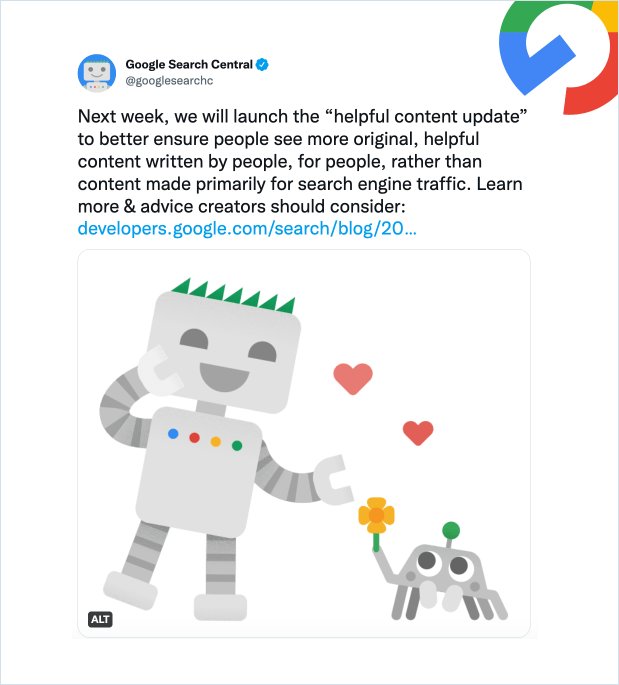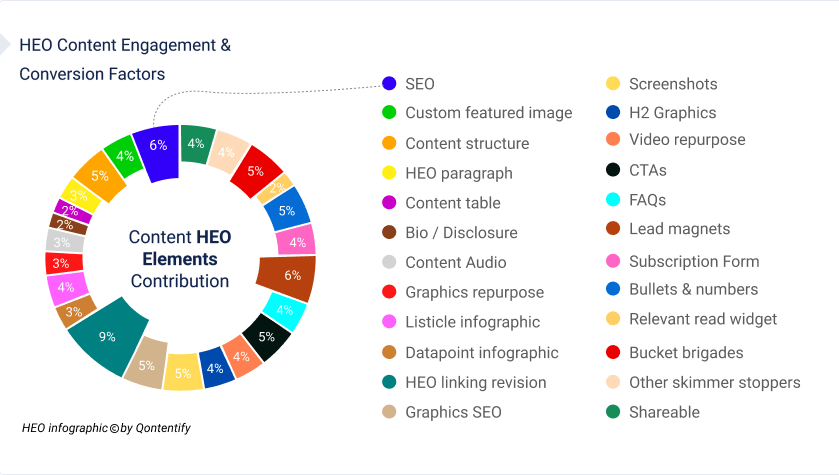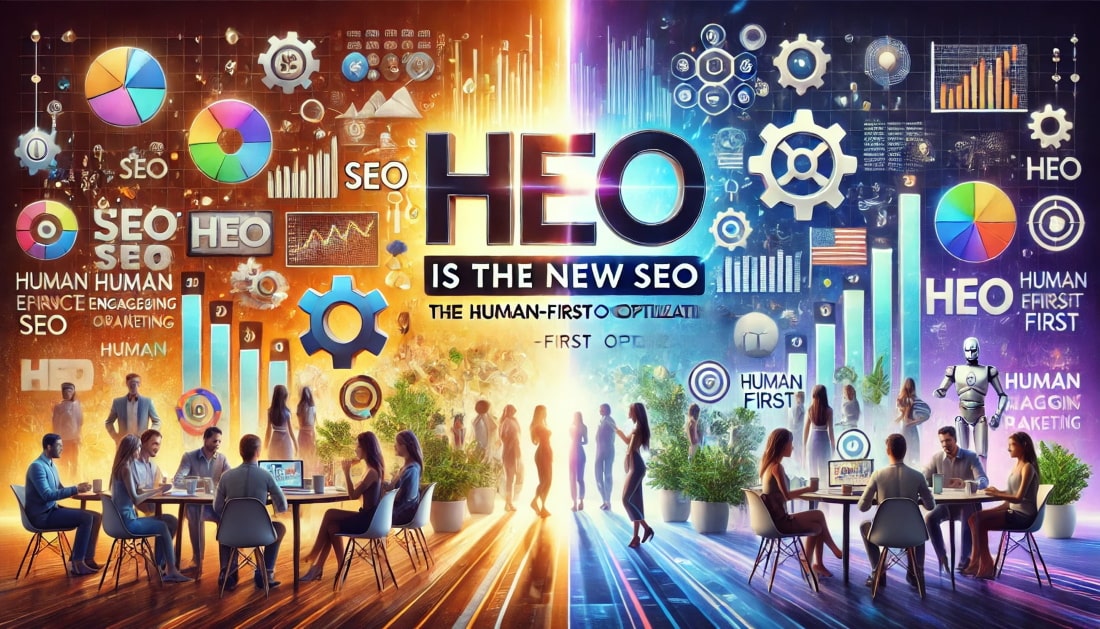It’s 2025—the era of ChatGPT, Gemini, DeepSeek, Claude, and Manus.
Want to dominate the future of digital marketing? Forget everything you thought you knew about SEO.
SEO isn’t dead; it has evolved altogether. The rules of content marketing have been redefined.
Search engines no longer reward content stuffed with keywords. Instead, they prioritize user experience, engagement, and real value. Algorithms are evolving, but one thing remains constant—people want content that helps, educates, and engages them.
Enter HEO—Human Engagement Optimization, the future of digital success.
HEO is more than SEO. Infact, SEO is part of HEO. It’s the strategy that puts people first. It’s about creating experiences, not just rankings.
The websites that optimize for HEO don’t just attract traffic; they convert visitors into engaged users and loyal customers – the bottom line results.

HEO (Human Engagement Optimization) is the evolution of SEO, focusing on optimizing websites, landing pages, and content for real human engagement, not just search rankings. It enhances user experience, storytelling, humanizing, EEAT, and conversion-focused design to drive deeper connections and higher conversions.
Rand Fishkin, Co-founder of Moz & SparkToro:
“Search engines are designed to serve people, not websites. The best content wins because it connects, not because it ranks.“

“The future of digital marketing is not about optimizing for search engines but optimizing for people. Brands that understand this shift will lead the next decade."
Rand Fishkin, Co-founder of Moz & SparkToro

Traditional SEO is about ranking; HEO is about engagement and conversion. For real quick, why HEO is the future:
- SEO focuses on search engines, while HEO focuses on users.
- SEO aims to rank high; HEO aims to retain and convert visitors.
- SEO uses keywords and backlinks; HEO optimizes content experience and interaction.
- SEO is technical; HEO is practical and action-driven.

88% of users won’t return to a website after a bad experience. (Econsultancy)

Websites with strong UX/UI see a 400% higher conversion rate. (Forrester Research)
This guide will show you why HEO is the future of SEO and content marketing. You’ll learn how to adapt your strategies to focus on engagement, conversion, and user experience—the factors that truly drive success in today’s web.
Let’s dive in and explore the shift from SEO to HEO—and why businesses that embrace this change will lead the future of digital marketing.
The Evolution of Search & Content
1. The Keyword Era:
In the early days of SEO, success was all about keywords. Websites ranked higher simply by stuffing content with targeted terms, often at the expense of readability and value.
Search engines were easier to manipulate, and rankings relied on backlinks, metadata, and keyword density rather than true relevance.

“In the past, SEO was about gaming the system. Today, it's about understanding your audience and delivering what they need."
Brian Dean, Founder of Backlinko

“75% of users never scroll past the first page of search results, making ranking tactics crucial.” (HubSpot)
2. The Rise of User-Centricity:
- Major updates like Panda (2011) penalized low-quality content.
- Penguin (2012) cracked down on spammy backlinks.
- Hummingbird (2013) improved search intent matching.
- RankBrain (2015) introduced AI-driven ranking.
- BERT (2019) refined how Google understands natural language.

"Google’s goal is not to make websites rank. It’s to help users find the best answers."
Danny Sullivan, Google Search Liaison
“70% of marketers believe understanding search intent is more important than keyword optimization.” (Search Engine Journal)
3. The Limitations of Traditional SEO
SEO still matters, but it’s no longer enough.
Ranking high doesn’t guarantee engagement. Current marketers’ biggest problems such as high bounce rates, low time on site, and weak conversions show that search traffic and visibility alone isn’t a win.
Users expect intuitive navigation, fast-loading pages, engaging visuals, and meaningful content. SEO focuses on discovery whereas HEO focuses on retention and conversion.

A study by Nielsen Norman Group found that users leave web pages within 10-20 seconds if they don’t find value immediately.
So, what is HEO, and how does it help?
4. What Is HEO?
HEO – Human Engagement Optimization is the next evolution of digital marketing – Human-first Marketing. It’s all about what you put into this – Human Engagement, Experience, Excitement, Element, and Engine Optimization.
HEO is a broader and more practical approach that includes:
- SEO – Still crucial but now part of a bigger strategy.
- CRO (Conversion Rate Optimization) –Optimizing elements to turn visitors into customers.
- User Experience (UX) & User Interface (UI) – Enhancing design, navigation, and usability.
- User Research & Intent Analysis – Understanding audience behavior and needs.
- EEAT (Experience, Expertise, Authoritativeness, Trustworthiness) – Building content credibility.
- Engagement Strategies – Interactive elements, storytelling, and personalized content.
- Page Speed & Mobile Optimization – Ensuring a smooth, fast experience across devices.
- AI-Powered Personalization – Enhances content by analyzing user intent and delivering hyper-personalized experiences.
- Blockchain in Content Marketing – Verify content authenticity through transparency and decentralized verification.

SEO is completely counterintuitive at the bottom line!
It integrates multiple disciplines to create a seamless, engaging user experience that leads to action.

"If you’re not optimizing for user engagement, you’re not optimizing for success."
Neil Patel, Digital Marketing Expert
5. Why HEO Wins:
Google now prioritizes engagement metrics like dwell time, bounce rates, and interaction. Businesses that focus on HEO (Human Engagement Optimization) will outperform those stuck in outdated SEO tactics.
Companies that invest in user experience see a 200% increase in conversion rates. (Forrester)
HEO is the future. It’s time to optimize for people, not just search engines.

Understanding the Human-First Approach
1. User Intent
Understanding why users search is more important than ever. Intent goes beyond keywords—it’s about solving problems and fulfilling needs.
- Informational intent: Users seek answers (e.g., “best practices for UX design”).
- Navigational intent: Users look for a specific brand or site (e.g., “Google Analytics login”).
- Transactional intent: Users are ready to act (e.g., “buy wireless headphones”).
“Search intent is the foundation of great content. If you don’t meet the intent, you won’t convert.” – Aleyda Solis, International SEO Consultant

80% of search queries are informational, not transactional. (Moz)
2. User Personas
Creating detailed user personas helps marketers understand audience demographics, behaviors, and pain points.
Personas include:
- Age, gender, occupation
- Interests, values, and motivations
- Common challenges and buying behaviors

Airbnb improved engagement by 30% after tailoring content to different traveler personas. (Harvard Business Review)
3. User Research
Great engagement comes from real data, not assumptions. Direct user feedback through surveys, interviews, and usability testing provides insights into behavior and pain points.
Methods of user research:
- Heatmaps: Analyze where users click and scroll.
- A/B testing: Compare versions to see what performs best.
- Live chat & surveys: Gather direct input from visitors.

"Data-driven decisions outperform intuition every time."
Avinash Kaushik, Digital Marketing Evangelist at Google
4. EEAT: Expertise, Authoritativeness, Trustworthiness
Google evaluates content based on EEAT factors, ensuring that high-quality, credible content ranks better.
- Expertise: Content written by industry professionals.
- Authoritativeness: Recognized thought leadership (citations, backlinks, and mentions).
- Trustworthiness: Accurate, well-researched, and transparent content.
47% of consumers read 3-5 pieces of content before engaging with a business. (Demand Gen Report)

"Trust is earned through consistency and credibility. Build for trust, and rankings will follow."
Marie Haynes, SEO Expert

47% of consumers read 3-5 pieces of content before engaging with a business. (Demand Gen Report)
Elements Of HEO: Strategies and Tactics
- On-site/On-page SEO
- EEAT
- Salience Score
- Copywriting
- Content Clarity & Intuitiveness
- Content Structure
- Visual Storytelling
- User Intent & Value Proposition
- Bullets & Numbers
- HEO Linking & Navigation
- Graphics Optimization
- CTAs
- Lead Magnets
- Humanized Content Optimization
- Publish Velocity
- Shareable
- FAQs
1. Content Optimization for Engagement
Storytelling:
Storytelling is a powerful way to connect with audiences. It builds trust, makes content memorable, and evokes emotions.
A study by Headstream found that 55% of consumers are more likely to buy from a brand if they love its story.

Nike’s "Just Do It" campaign is a perfect example. It connects emotionally, inspires action, and remains relevant decades later.

AI Overviews are a fairly new feature, and they are subject to frequent changes. Results can fluctuate between searches. A keyword might trigger an

Compelling Copywriting:
Clear, concise, and persuasive copy improves engagement. Jakob Nielsen’s research shows that users read only 20-28% of text on a webpage.
Strong headlines, bullet points, and active voice make content easier to consume. Apple’s product pages demonstrate this well—short, crisp sentences with compelling calls to action.
Diverse Content Formats
Different users prefer different content types. Videos, infographics, interactive tools, and podcasts increase engagement.

According to HubSpot, videos increase conversion rates by 80%. Infographics are 30 times more likely to be read than text. A mix of formats keeps users engaged longer.
2. Website Optimization for Experience
UX/UI Design
A seamless, intuitive website keeps users engaged. Bad design frustrates visitors and increases bounce rates.
A study by Adobe found that 38% of users leave a website if the design is unattractive. Clear calls to action, intuitive navigation, and readable typography enhance the experience.
Mobile-First Approach
Over 60% of web traffic comes from mobile. Google prioritizes mobile-friendly sites in rankings.
A responsive design, fast-loading mobile pages, and easy navigation are crucial. Google’s Mobile-Friendly Test helps check optimization.
Site Speed and Performance
Core Web Vitals (LCP, FID, CLS) measure site performance. Tools like Google PageSpeed Insights help identify areas for improvement.

Slow websites kill engagement. A 1-second delay can reduce conversions by 7%. (Akamai)
Accessibility
A website should be usable by everyone, including people with disabilities. Over 1 billion people worldwide have a disability (WHO).
WCAG (Web Content Accessibility Guidelines) ensures compliance. Features like alt text, keyboard navigation, and color contrast improve accessibility.
Humanization:
Humanization is the key element of HEO. It’s about making your website, landing pages, and content feel more human—authentic, relatable, and engaging.
By infusing personality, CEO message marketing, human faces, storytelling, intuitiveness, and emotional intelligence, we create experiences that connect with users on a deeper level, fostering trust and driving conversions.

AI Overviews are a fairly new feature, and they are subject to frequent changes. Results can fluctuate between searches. A keyword might trigger an
3. Conversion Optimization (CRO)
A/B Testing
A/B testing helps optimize pages for better conversions. Changing headlines, CTA buttons, or layouts can impact user behavior.
Google found that testing 41 shades of blue for link colors increased click-through rates. Even small tweaks can make a big difference.
Lead Generation
Effective lead generation requires well-placed forms, pop-ups, and gated content.
Ebooks, webinars, and free tools can encourage sign-ups. For example, HubSpot’s free templates generate thousands of leads every month.
Personalization
Personalized content improves conversion rates. 91% of consumers prefer brands that offer relevant recommendations (Accenture).
AI-powered tools analyze user behavior to show tailored content.

Amazon’s "Recommended for You" section boosts sales through personalization.
4. Modern Trends & Technologies Integration
Google’s Search Generative Experience (SGE)
SGE is changing search by providing AI-generated answers. This means brands must focus on detailed, high-quality content that answers user questions comprehensively.
Creating expert-driven, authoritative content will help rank in AI-enhanced search results.
Answer Engine Optimization (AEO)
Voice search and featured snippets are reshaping SEO. 58% of consumers use voice search to find local businesses (Search Engine Journal).
To optimize for AEO, use structured data, conversational keywords, and FAQ-style content.
AI and Automation
AI enhances content personalization, automates repetitive tasks, and improves marketing efficiency.
The chatbots, predictive analytics, and AI-powered email marketing increase engagement. However, human oversight ensures AI-driven content remains valuable and authentic.
The Metaverse, Web3, and Blockchain
The future of digital interaction is evolving. Virtual reality, NFTs, and decentralized platforms have transformed content marketing.
Brands like Nike and Gucci are already exploring the Metaverse. Early adoption can provide a competitive edge in the coming years.
Blockchain can verify content authenticity, eliminate ad fraud, and enhance user trust.
How To Measure HEO Success
1. Key Performance Indicators (KPIs)
Tracking the right metrics is crucial to measuring HEO success. Now we focus on more meaningful metrics that matter when we talk about Performance and Results.
Some key KPIs include:
- Time on Page: A higher duration indicates better engagement.
- Bounce Rate: A low bounce rate suggests users find value.
- Scroll Depth: Measures how much content users consume.
- Conversion Rates: Tracks actions like sign-ups and purchases.
- Social Shares: Shows content resonance and reach.
- User Feedback: Surveys, reviews, and ratings provide qualitative insights.
2. Analytics Tools
Several tools help track and analyze HEO performance:
- Google Analytics: Provides data on user behavior and conversions.
- Hotjar: Offers heatmaps and session recordings for UX insights.
User Testing - Platforms: Tools like UsabilityHub help gather direct user feedback.
Leveraging these tools ensures data-driven decision-making and continuous improvement.
3. The Importance of Iteration
HEO is not a one-time effort. It requires continuous monitoring and optimization.
- Analyze Data: Regularly review KPIs to identify areas of improvement.
- Test and Adapt: A/B testing helps refine strategies based on performance.
- Stay Updated: Digital trends evolve. Keeping up with industry changes ensures HEO remains effective.
By iterating and optimizing, businesses can sustain engagement, improve user experiences, and drive long-term success.
HEO vs. SEO: The Future of Content Marketing
1. The Master Strategy for “Everywhere” Optimization
SEO is just one piece of the puzzle. HEO is the broader framework that encompasses all aspects of digital engagement.
While SEO focuses on search engines, HEO prioritizes Target Users.

A study by Google found that 53% of mobile users abandon sites that take longer than three seconds to load.
This proves that technical SEO alone isn’t enough—engagement is key.
By integrating SEO within HEO, businesses create content, websites, and landing pages that rank well keep users engaged, and drive sales.
2. The Human Advantage
People connect with people, not algorithms. HEO ensures that content speaks to humans first, and search engines second.
Authenticity and trust drive engagement. A study by Edelman found that 81% of consumers need to trust a brand before making a purchase.
Brands that build communities through interactive content, storytelling, and personalized experiences outperform those relying purely on traditional SEO tactics.
3. Future-Proofing Your Strategy
The digital landscape is always evolving. Google’s AI-powered Search Generative Experience (SGE) and voice search are reshaping how people find information.
HEO adapts to these changes by focusing on:
- User Intent: Understanding what users want.
- Engagement Metrics: Optimizing for time on page, click-through rates, and interactivity.
- Emerging Tech: Leveraging AI, personalization, and immersive experiences like the Metaverse.

"Marketers who ignore HEO will fall behind. The user-first era has already begun."
Brian Dean, Founder of Backlinko
4. What Businesses Should Do Now
- Shift focus from search engines to users.
- Implement HEO-driven CRO and UX strategies.
- Adapt content for AI and Answer Engines.
- Leverage blockchain for trust and credibility.
- Prioritize EEAT and interactive content formats.

Businesses prioritizing customer experience generate 60% more revenue than competitors. (Forbes)
70% of consumers say page speed impacts their purchasing decisions (Google).
Businesses that embrace HEO will stay ahead of the competition. Those stuck in outdated SEO tactics risk losing relevance.
HEO is not a trend—it’s the future of content marketing.
Conclusion
The digital marketing landscape has evolved. It’s no longer enough to stuff keywords and chase rankings simply. Search engines are prioritizing user experience. The future of content marketing is human-centric.
HEO, Human Engagement Optimization, is the key. It’s the overarching strategy that puts people first. It’s about understanding user intent. It’s about creating valuable content and building genuine connections.
SEO is still important. But it’s a component of HEO, not the other way around. HEO encompasses everything that impacts user experience. From content creation to website design to conversion optimization.
By embracing HEO, you’re not just optimizing for search engines. You’re optimizing for humans. You’re building a content marketing strategy that is future-proof. A strategy that will drive engagement and results.
Ready to put humans at the heart of your marketing?
Join our community. Subscribe to our newsletter. Let us help you navigate this new era of content marketing.
Let’s build a human-first future web together.

AI Overviews are a fairly new feature, and they are subject to frequent changes.
FAQs
What is the difference between SEO and HEO?
The only difference is in approach and focus. SEO focus on search engines with Keywords and HEO focuses more on users with USEFUL content.
Both SEO and HEO shares many elements such as title tags and meta description.
The real way to win at SEO is to focus on HEO. Human enjoyment optimization, in which you “don’t solve for the search engines, but solve for the humans.”
What is more important for future content marketing - SEO or HEO?
Both are important to succeed in future content marketing games. Simply, create content with the approach of Humans and optimize it with keywords, helping search engines find and rank that content giving an initial push.
How to create Google’s HELPFUL content?
Focus on creating high-quality content that not only pleases the search engines but also attracts, engages, and retains your audience.
- User intent targeted
- Content Strategy and business potential
- Keyword optimization
- Content structure
- Storytelling graphical optimization
- Skimmers stoppers
- Optimize CTAs
- Linking Revisions
- Shareable
Z.D. Babar
A fine copywriter, SEO/HEO expert, content strategist and digital marketing guru. Co-founder & CEO @ Qontentify. Helps content marketers in optimizing their content & social pages with SEO plus HEO, to convert the highest. Chief growth strategist @ MarginBusiness – Amazon agency.






